Title: Testing Approaches to the Analysis and Utilization of
Martian Regolith
Members: Aravind Karthigeyan, Noah Mugan, Prakruti
Raghunarayan
Martian Materials Report
Introduction : Our mission focuses on the detailed analysis of Martian samples to understand the geological history and composition of the Martian surface. This involves the collection, processing, and examination of various samples, including fine Martian soil, White Mound samples, and igneous rocks. By employing a combination of grinding, exfoliation, and microscopic examination techniques, we aim to uncover insights into the mineralogical and geological characteristics of these materials.
Sample Collection and Processing: To date, we have collected a diverse range of samples from various locations around the Mars Desert Research Station (MDRS). These samples include:
- Fine Martian Soil: 4 in MMS-1 Mojave Mars Simulant from The Martian Garden
- White Mound Samples: These samples were taken from distinct white mounds observed in the region, suspected to have unique mineralogical properties.
- Igneous Rocks: Found during an EVA, these rocks were carefully extracted and prepared for further analysis.
- Marble Ritual Sample: A set of rocks found near marble ritual that are of interest
Methodology: Our analytical process involves several key steps:
- Grinding and Exfoliation: The collected bulk materials are ground into a fine powder to facilitate further examination. This powdered substance is then exfoliated to isolate individual layers.
- PDMS Integration and Microscopic Examination: The exfoliated samples are added to Polydimethylsiloxane (PDMS) and observed under a microscope. This helps us determine if the samples separate into bulk material, bilayers, or monolayers. For instance, thinning observed in fine Martian soil and White Mound samples often indicates the presence of bilayers.
Key Findings:
- Thinning in Samples: The fine Martian soil and White Mound samples exhibited significant thinning under microscopic examination. This phenomenon typically suggests the presence of bilayers, providing insight into the structural composition of these materials.
- Analysis of Igneous Rocks: We have successfully cut into the collected igneous rocks and initiated age determination studies. By examining the geological features and comparing them with established geological studies, we hope to uncover details about the rock’s formation and the historical activity in the region.
Discussion: Our findings thus far indicate promising directions for further research:
- Presence of Bilayers: The identification of bilayers in Martian soil and White Mound samples suggests complex mineralogical processes at play. Understanding these processes can provide valuable information about the environmental conditions on Mars.
- Geological History: The analysis of igneous rocks offers a window into the geological history of the area. By determining the age and formation processes of these rocks, we can infer past volcanic activity and other geological events that shaped the Martian landscape.
Applications and Future Work: The techniques and findings from our current research have several practical applications:
- Geological Mapping: The ability to identify and analyze bilayers and other structural features in Martian samples enhances our capability to map and understand the geology of Mars.
- Spectroscopy Integration: Building on initial compositional analysis through spectroscopy, our approach adds a second layer of geological investigation. This combined method can provide a more comprehensive understanding of Martian terrain.
- Historical Insights: The age determination and analysis of igneous rocks will contribute to a broader understanding of the geological timeline and activity on Mars.
Conclusion: Our end-of-mission analysis has yielded significant insights into the mineralogical and geological characteristics of Martian samples. The presence of bilayers in soil and mound samples, along with the ongoing study of igneous rocks, offers promising directions for further research. These findings not only enhance our understanding of Martian geology but also pave the way for future exploration and analysis techniques on Mars.
Martian Radiation Report
Introduction : One of the critical aspects of ensuring the safety and well-being of a crew in a Martian environment is the ability to detect and respond to radiation threats in their immediate surroundings. Due to Mars’s lack of a substantial magnetosphere and atmosphere, the planet is exposed to higher levels of ultraviolet radiation and cosmic rays compared to Earth. These factors contribute to increased radiation exposure, posing significant risks to human health.
Objective : The primary objective of this research was to monitor radiation levels in various locations and conditions on Mars using a Geiger counter. By doing so, we aimed to identify areas and situations with elevated radiation exposure and develop strategies for quick response and mitigation.
Methodology: We utilized a Geiger counter to measure radiation levels, recorded in counts per minute (CPM), at different sites around the Mars Desert Research Station. Specific attention was given to areas with potential radiation sources and during environmental conditions that could influence radiation flux.
Key Findings :
Petrified Wood Samples : One significant finding was the detection of increased radiation levels in petrified wood samples. These samples exhibited higher CPM readings, likely due to the absorption of heavy metals during the petrification process. This discovery underscores the importance of analyzing geological samples for radiation content before handling or transporting them.
Windy Periods and Dust Storms : Another notable observation was the increase in radiation flux during windy periods, which are analogous to Martian dust storms. These conditions stirred up dust particles that could carry radioactive elements, leading to higher radiation readings. Understanding the correlation between wind activity and radiation levels is crucial for planning safe EVAs and ensuring crew protection during adverse weather conditions.
Discussion : The ability to quickly detect and respond to increased radiation exposure is vital for crew safety on Mars. The Geiger counter proved to be an effective tool for real-time monitoring, allowing the crew to take immediate action when necessary. The findings from this study highlight the need for continuous radiation monitoring and the development of protocols to mitigate radiation risks.
Conclusion: This research underscores the importance of radiation monitoring in a Martian environment. By identifying and understanding the sources and conditions that lead to increased radiation exposure, we can better protect the crew and ensure their safety during missions on Mars. Future studies should focus on refining monitoring techniques and developing advanced protective measures to mitigate the risks associated with radiation exposure.
Martian Agriculture Report
Throughout our mission, we grew a collection of 12 radishes in three separate soil types:
- 4 in standard potting soil (Our control group)
- 4 in MMS-2 Enhanced Mars Simulant from The Martian Garden
- 4 in MMS-1 Mojave Mars Simulant from The Martian Garden
The last two samples are very accurate replications of the soil rovers have analyzed on Mars. Our soil was only supplemented with vermicompost, and we hoped to analyze the nutritional differences between the plants following the conclusion of our mission.
These radishes were planted three weeks before the start of our mission, and by the time we arrived every pot had healthy sprouts. There were already two radish bulbs from our potting soil samples and we could see a radish root widening in one pot with analog Martian soil, indicating the possibility that Martian soil could potentially sustain life with some supplements.
Unfortunately, problems arrived when we “landed” at MDRS. Upon arrival, we placed the radishes in the Science Dome’s grow tent. However, after several days, we observed that many plants were exhibiting drooping leaves with black spots. We suspected that this may be a problem with the grow tent, given that the problems emerged so soon after the change in environment. As such, we moved the radish samples onto a table in the science dome and placed a desk lamp above to provide wherever light we could.
After moving the samples out of the grow tent we observed each plant become healthier again, with leaves standing tall again and stems growing thicker. We also cut off the leaves with black spots to prevent the spread of any disease. However, while this change did save the plants from dying, it also seemed to halt their growth. We believe that the desk lamp did noy provide adequate light to the radishes, and as such they were not able to grow beyond their state from when we arrived. We tried moving several samples back to the grow tent while leaving the flap open, in case the stale air was what caused the problem before. However, almost immediately we noticed that the tent plants grew sick again and the black spots reappeared, leading us to move all plants back under the desk lamp. Our findings indicate that some aspect of the grow tent is harming the radishes, and we could not find a way to change any settings on the light or fan.
By the end of our mission, the radishes had not grown beyond their state from when we arrived. While our experiment did not prove that supplemented Martian soil can sustain life, we do suspect that a replication of this experiment could be successful due to the fact that many of our samples were healthily growing prior to MDRS, under a sufficient lamp and without the harmful grow tent.
Despite the problems we encountered, we do still have some qualitative findings.
Results:
- The potting soil grew the healthiest radishes, as expected.
- Radishes grown in the MMS-1 Mojave Mars Simulant also fared reasonably well, and we observed a full radish root growing in one pot before arriving at MDRS.
- Radishes grown in MMS-2 Enhanced Mars Simulant did not grow nearly as well as their brethren. Samples from this group had the thinnest stems and smallest leaves, and were the first to die when placed in the grow tent.
The MMS-2 Enhanced Mars Simulant is the more accurate recreation of Martian soil, which hints that true Martian soil may be a poor soil for crops. However, soil supplements may fix whatever deficiencies there are. Our radishes still produced leaves despite all the roadblocks, and we plan on sending these leaves to a lab for nutritional analysis. If our samples are of sufficient size, we can expect to see detailed reports of the nutrients in radishes from each sample, which will allow us to plan what ways astronauts may need to supplement soil for actual agriculture on Mars. This work shows promise for future advancements in testing Martian agriculture, and future experiments with a more thoroughly-tested environment and a larger sample size will hopefully provide even firmer results.
Project : Environmental Mapping and Pathfinding using
Drone-captured Data
Team Member : Rishabh Pandey
Engineering Report
The primary goal of this project was to develop accurate 3D models of the HAB’s surrounding environment using drone-captured footage and photogrammetry software, aiming to support the development of an AI-based pathfinding algorithm for safe and efficient navigation during extravehicular activities (EVAs). Throughout the mission, significant progress was made in capturing and processing video footage of the target environments around the HAB, including paths along Cow Dung Road and more remote walking EVA locations. The footage was processed with photogrammetry software, generating detailed 3D models which were then verified for accuracy against existing topological maps and self-measurements. Multiple drone flights successfully captured comprehensive video footage of these environments, and 3D models were produced by stitching together video frames. These models were verified for accuracy through comparison with topological maps and direct measurements, and efforts were made to ensure they were free from incorrect artifacts and inconsistencies. Preliminary pathfinding algorithm development was undertaken, applying algorithms like Dijkstra’s to identify possible paths in sandbox environments. This phase demonstrated initial success in controlled settings, establishing a foundation for real-world application.
Despite these successes, the pathfinding algorithm encountered significant challenges when applied to the real-world environment. The environment exhibited abrupt changes from hard-packed soil to loose sand, causing large variations that impacted algorithm performance, leading to inaccuracies in pathfinding predictions as the algorithm struggled to adapt to the inconsistent terrain. Additionally, the rovers’ operational range and power capabilities were not adequately accounted for in the algorithm, resulting in impractical path suggestions. The combined walking and climbing ability of the crew further complicated route planning, as the algorithm failed to balance these factors effectively. Unexpected road compositions and build complexities introduced additional variables that the algorithm could not predict or accommodate, collectively hindering its reliability and accuracy in real-world applications. While the AI pathfinding algorithm did not perform as expected in the mission’s final phase, valuable insights were gained regarding environmental mapping and the complexities of real-world navigation. Future efforts should focus on enhancing the algorithm’s adaptability to diverse and changing terrains, incorporating comprehensive data on rover capabilities and crew mobility to improve route planning accuracy, and developing more sophisticated models to better predict and account for unforeseen environmental factors. The work completed during this mission provides a strong foundation for further development and refinement of environmental mapping and pathfinding technologies, with the potential for significant improvements in future missions.
Title: Photometric Study of White Dwarf BD-07 3632
Crew Members: Avery Abramson and Kristina Mannix
Astronomy Report
Introduction : We intend to continue capturing and analyzing the light curves of BD-07 3632, a WD with limited data. This star is notable for its bright magnitude and location in a binary system with an RD. With the light curves obtained from this project, more insight into its properties can be revealed. BD-07 3632 is an excellent candidate with a bright magnitude at 11.90 V. Its stellar coordinates are 13 30 13.6370112733, -08 34 29.46. It also has minimal research; on NASA ADS, no papers have been published on this WD, nor is there research from AAVSO.
Objective and Methodology : As this star is under-researched, we plan to deduce if it is pulsating. Discovering its pulsation mode can help us understand the star’s composition, density, temperature, and layering. To do this, we will continue using a telescope with assistance from its tracking software to produce data. Then, we will continue removing noise from the data caused by factors such as atmospheric clouds by using the comparison stars. The three comparison stars we are using include HIP 65856 (Mag 8.8, 13h 29m 58.42s, -14 deg 0′ 5.4″), Tycho 5551:631 (Mag 9.9, 13h 29m 48.75s, -13 deg 40′ 37.4″), and Tycho 5551:421 (Mag 9.86, 13h 29m 35.62s,
-13 deg 55′ 35.5″). These images are taken with a primary focus on the photometric V filter at a 240-second exposure. With this data, we are using an in-house tool developed in Python and its appropriate modules to generate the light curves of the WDs with time vs. intensity plots. To clear up the data, we are then doing a Fourier analysis of the time series light curve through the power spectrum. Following this, we are finding the amplitudes and try to deduce the pulsation mode and the intensity.
Key Findings : This project is still in progress and will continue on Earth. Once concluded, findings will be presented in the future.
Discussion : The data from this project may confirm or refine findings from other related works. It may also influence future studies on BD-07 3632 and other related WDs. Additionally, we may be able to deduce other characteristics of these WDs that were previously undiscovered. Overall, our research has the potential to increase our understanding of WDs.


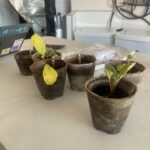
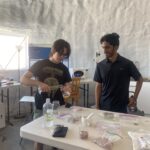
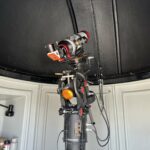
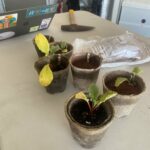
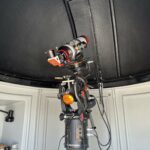
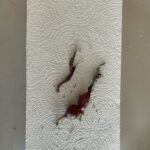
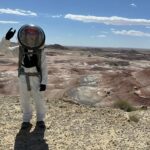
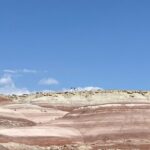
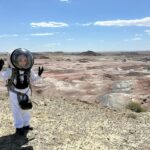
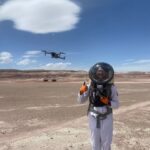
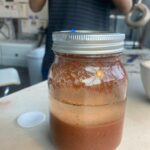
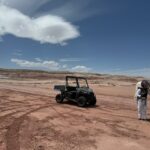
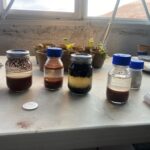
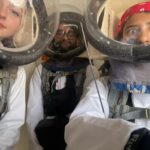
You must be logged in to post a comment.